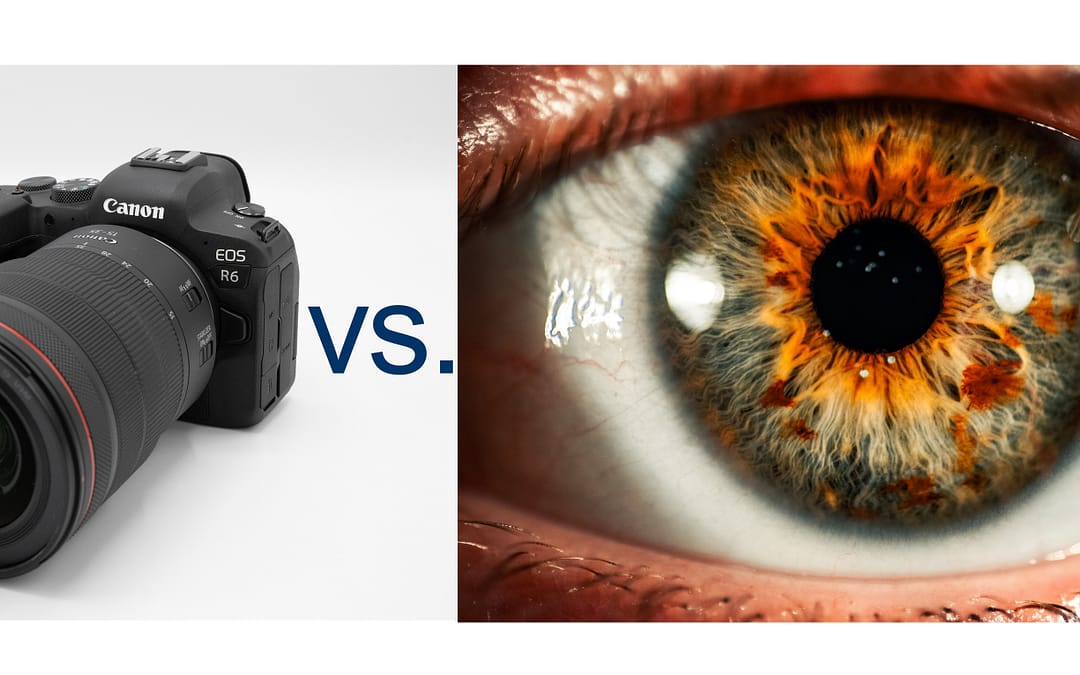As humans, we are accustomed to the incredible wonders of the human eye. We are often awestruck by the vast range of colours and details we see in our everyday life. As technology progresses, we have digital cameras, which have come a long way from its origin. Some cameras nowadays have an impressive resolution of over a hundred megapixels. However, have you ever wondered how many megapixels do our eyes have?
To put it simply, the human eye has about 576 megapixels, which is an equivalent resolution of 576 million pixels. It is astonishing to think that the resolution of the eye vastly exceeds that of even the most advanced camera. However, the effective resolution of the human eye cannot be directly compared to a camera because of the vast differences in the way the two function.
Apart from the resolution, there are a few features of the human eye that makes it unique when compared to digital cameras. For starters, the eye constantly auto-focuses and adjusts, allowing us to see objects at different distances clearly. Unlike cameras, which often require manual focus adjustments for different objects, our eyes have a lens that changes shape to adjust to different distances.
Furthermore, our eyes have the ability to adjust to dim and bright light, allowing us to see in different lighting conditions. The amount of light reaching the retina controls the eye’s response to different brightness levels. Our eyes can also adjust the size of the pupil to control the amount of light entering, adapting to light changes within seconds.
Unlike digital cameras, our eyes have a much wider field of view, reaching up to 200 degrees horizontal and 150 degrees vertical. This, coupled with our brain’s ability to combine a series of images into a single display, creates a comprehensive view of the world around us.
Another significant difference between the eye and digital cameras is the way color is perceived. Digital cameras see colours using RGB (red, green, blue) sensors, whereas the eye sees colours with its three types of cones, which are sensitive to different wavelengths. The blending of these wavelengths helps us perceive the full range of colors we see around us.
Furthermore, our eyes have a fantastic dynamic range, which is the range of brightness levels that can be captured by a camera. The human eye can distinguish 500 different levels of brightness, while a camera often has less than 20 f-stops. This is why we can see a significant difference in shadows and highlights, which often gets crushed in a photograph.
Finally, the human eye also has an ability to detect motion and perceive depth. Our eyes capture a series of still images, which our brain processes to create the illusion of motion. This rapid processing of information gives us the ability to see moving objects, unlike cameras that often require a high shutter speed to capture motion. Additionally, our eyes see the world in 3D, as we have two eyes that capture two slightly different images that the brain processes into a single image, giving us depth perception.
In conclusion, the equivalent megapixels of the eyes may be astonishingly higher than that of digital cameras, but it is the way our eyes function that makes it unique. The human eye’s ability to auto-focus, adjust to different lighting, see a wide field of view, and perceive depth and motion makes it significantly better than even the best of cameras in certain respects. Needless to say, the human eye and the camera have their own importance in different areas of life, and there are certain things that only the camera can capture. Nonetheless, the human eye will always be the most intricate and remarkable camera known to us.
For more interesting blog posts visit my website.


